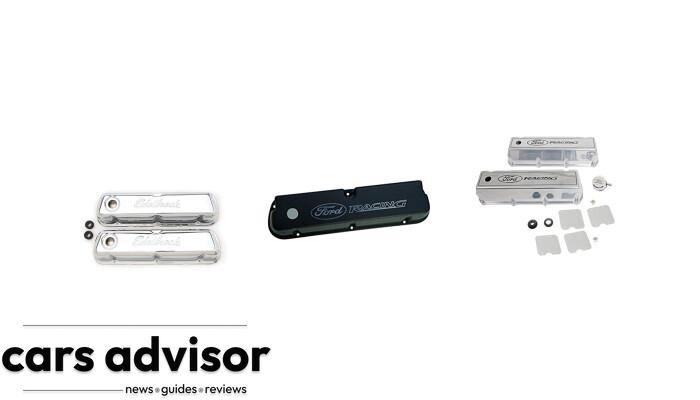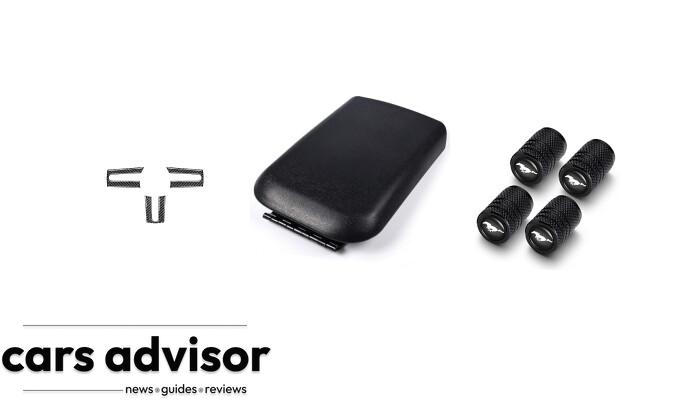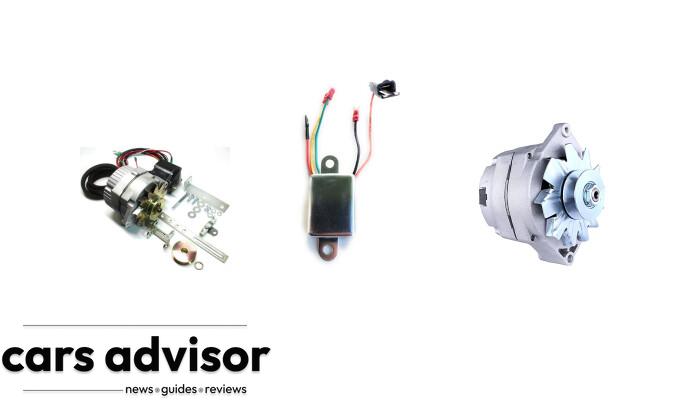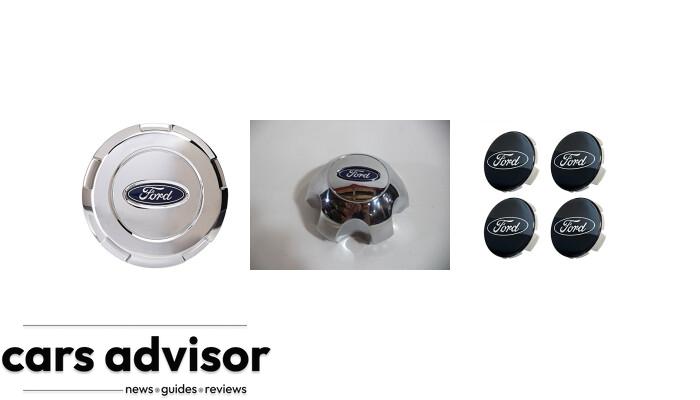Understanding The Importance Of A Fuel Pressure Regulator
A fuel pressure regulator is crucial in maintaining your engine’s optimal performance and efficiency. It controls the fuel delivered to the engine, ensuring a consistent balance between air and fuel during combustion. Keeping the pressure levels steady protects the fuel injector system and the overall engine condition. In an automobile, the pressure may vary depending on factors like RPMs, load on the engine or even temperature changes. The job of a well-functioning fuel pressure regulator is to adapt to these changes to maintain proper air-fuel ratios for smooth operation. Without appropriate regulation by this vital component of your car’s fuel system, you may experience issues such as decreased gas mileage, sluggish acceleration, or rough idling – all signs indicating that checking your regulator could be necessary. Knowing methods such as testing a fuel pressure regulator without a gauge can be useful when attempting diagnostics without professional tools. Alternatives like listening for buzzing noises from your car’s OBD II diagnostic scanner tool or feeling the vibration from the vehicle’s real-time running engine will help identify problems with minimal effort and expense.Signs Of A Faulty Fuel Pressure Regulator
If you’re experiencing engine misfires or stalling, poor fuel economy, or difficulty starting the engine, these could be signs of a faulty fuel pressure regulator – keep reading to learn how to test and adjust it without a gauge.Engine Misfires Or Stalling
One of the most common signs of a faulty fuel pressure regulator is engine misfiring or stalling. If your vehicle’s engine suddenly turns off while driving, it could be due to low fuel pressure caused by a malfunctioning regulator. Another sign is when the engine hesitates or jerks during acceleration or idling. These issues are caused by insufficient fuel supply to the engine and can lead to further damage over time. Proper testing of the fuel pressure regulator can help identify this issue before it leads to more significant problems without proper diagnostics equipment like a gauge.
One way to check for faulty regulators that cause misfiring is by listening for any unusual buzzing noise from the vehicle at startup. Any odd sound may suggest an issue with your car’s fuel system, so you should have it checked immediately.
It’s always best practice to consult your car repair manual as there might be variations in how different models behave during diagnosis and troubleshooting activities related to identifying issues with their engines’ performance.
As well as their respective systems like fuel delivery mechanisms and other vital components dependent on them working properly.
Proper testing of the fuel pressure regulator can help identify this issue before it leads to more significant problems without proper diagnostics equipment like a gauge.
One way to check for faulty regulators that cause misfiring is by listening for any unusual buzzing noise from the vehicle at startup. Any odd sound may suggest an issue with your car’s fuel system, so you should have it checked immediately.
It’s always best practice to consult your car repair manual as there might be variations in how different models behave during diagnosis and troubleshooting activities related to identifying issues with their engines’ performance.
As well as their respective systems like fuel delivery mechanisms and other vital components dependent on them working properly.
Poor Fuel Economy
If your vehicle is experiencing poor fuel economy, it could be a sign of a faulty fuel pressure regulator. A malfunctioning regulator may cause the engine to receive too much or too little fuel, leading to decreased efficiency and increased costs at the pump. Other symptoms of a bad regulator include hesitation or rough idling when accelerating, as well as slow acceleration and reduced power output. It’s important to address these issues promptly by testing and potentially replacing the fuel pressure regulator. Remember to consult your vehicle’s repair manual for specifications and instructions on properly testing the regulator without a gauge using methods such as listening for buzzing noises during start-up or checking for vacuum leaks. By addressing problems with your fuel system early on, you can save money in both the short and long term by improving overall efficiency and preventing more serious damage.Difficulty Starting The Engine
If you’re having trouble starting your vehicle, a faulty fuel pressure regulator may be to blame. When the regulator fails, it can allow too much or too little fuel into the engine, making it difficult to start. Additionally, if the check valve in the fuel pump fails, it can cause a drop in fuel pressure, making starting difficult.
You can take a few steps to test whether your difficulty starting is related to the fuel pressure regulator. First, listen for a buzzing noise when turning on the ignition.
This indicates that the fuel pump is working properly and supplying enough fuel to start the engine.
If you don’t hear this noise and have difficulty starting your car and poor gas mileage, chances are high that something may be wrong with your Fuel Pressure Regulator.
If there’s no buzzing sound or if it sounds weak or irregularly timed – meaning some pumps of low intensity and frequency occur more often – then this could indicate an issue with either the pump itself or its electrical connection.
It’s recommended to consult a professional mechanic at this point since further diagnostics may require specific equipment, such as an OBD II diagnostic scanner tool mentioned earlier, to help identify any issues with loss of power supply or signal integrity problems within electronic circuits connected between different modules present in Vehicles Nowadays (ECU).
Additionally, if the check valve in the fuel pump fails, it can cause a drop in fuel pressure, making starting difficult.
You can take a few steps to test whether your difficulty starting is related to the fuel pressure regulator. First, listen for a buzzing noise when turning on the ignition.
This indicates that the fuel pump is working properly and supplying enough fuel to start the engine.
If you don’t hear this noise and have difficulty starting your car and poor gas mileage, chances are high that something may be wrong with your Fuel Pressure Regulator.
If there’s no buzzing sound or if it sounds weak or irregularly timed – meaning some pumps of low intensity and frequency occur more often – then this could indicate an issue with either the pump itself or its electrical connection.
It’s recommended to consult a professional mechanic at this point since further diagnostics may require specific equipment, such as an OBD II diagnostic scanner tool mentioned earlier, to help identify any issues with loss of power supply or signal integrity problems within electronic circuits connected between different modules present in Vehicles Nowadays (ECU).
How To Test A Fuel Pressure Regulator Without Gauge
You don’t necessarily need a fuel pressure gauge to test your regulator – in fact, you can do it right at home in several ways! Keep reading to discover the different methods and learn how to troubleshoot any issues with your car’s fuel system.Listen For A Buzzing Noise When Starting The Vehicle
When starting the vehicle, one way to test a fuel pressure regulator without a gauge is to listen for a buzzing noise. If you hear this sound, it indicates that the fuel pump is working properly and sending fuel to the engine. However, if there is no buzzing noise or it sounds weak, it could indicate a faulty fuel pressure regulator. Additionally, if you hear any sputtering or hesitation when starting the engine, this can indicate a bad fuel pressure regulator. In some cases, the engine may stall out completely due to insufficient fuel delivery caused by a malfunctioning regulator. Therefore, it’s important to pay attention to the sound of the engine and how smoothly it starts up. Remember that while listening for these sounds can provide insight into whether your fuel pressure regulator is functioning properly, getting a professional diagnosis in case further testing or repairs are needed is still recommended.Check For Fuel Pressure By Feeling The Fuel Line
Another method to check for fuel pressure without a gauge is to feel the fuel line. Here’s how:- Locate the fuel line that runs from the fuel pump to the engine.
- Squeeze or pinch the fuel line with your fingers firmly.
- Release your fingers, and observe if you feel any pressure in the line.
- Repeat this process several times while observing and feeling for any changes in pressure.
Use An OBD II Diagnostic Scanner Tool
One of the best ways to test a fuel pressure regulator without a gauge is to use an OBD II diagnostic scanner tool. This tool can provide real-time engine fuel measurements that allow you to determine the performance and functionality of the fuel pressure regulator. To use this method, connect the scanner tool to your vehicle’s diagnostic port and check for any error codes related to fuel pressure regulation. The scanner will also show you how much vacuum there is in your system, which can help you identify problems with your fuel delivery system. Apart from real-time engine readings, the OBD II diagnostic scanner tool also enables you to run tests on different systems in your car, such as emissions control, transmission, and brakes, among others. It is important that before using this method, you consult with your vehicle repair manual or manufacturer specifications for proper testing procedures since some vehicles require specific tools or settings to ensure accurate readings. This convenient and effective testing option could save drivers significant time and money compared with traditional mechanic visits. In summary, an OBD II diagnostic scanner tool offers a highly reliable way of checking if a vehicle’s fuel pressure regulator works efficiently, even without a gauge. Though it may seem daunting at first glance, utilizing such technology helps significantly decrease guesswork around potential mechanical issues, thus offering cost-effective solutions where possible while ensuring optimal vehicular performance.Other Ways To Test Fuel Pressure Without A Gauge
In addition to feeling the fuel line and using an OBD II diagnostic scanner tool, there are a few other ways to test a fuel pressure regulator without a gauge, such as removing the cap attached to the fuel system test port or checking for vacuum leaks – keep reading to learn more!Remove The Cap Attached To The Fuel System Test Port
If you have a modern vehicle, a fuel system test port will likely be attached to the engine. This port can be used to check fuel pressure without using a gauge. To access this port, remove the cap attached to it and connect a hose that leads into an empty container. Start your car and wait for fuel to flow into the container. Measure the volume of this collected gasoline and compare it with what your repair manual suggests. Another way that you can use this fuel system test port is by connecting it directly to your vacuum pump or gauge. Depending on what type of testing equipment you have available, you may need different adapters or fittings to connect everything properly. Once connected, start the engine while monitoring the gauge and pump closely. If either measurement deviates significantly from what should be expected according to your vehicle’s specifications, there could be something wrong with your fuel pressure regulator or other parts of your fuel delivery system. Removing the cap attached to the fuel system test port is one simple yet effective way of checking whether or not your car’s fuel pressure regulator is functioning correctly without requiring expensive diagnostic tools or extensive mechanical knowledge. By following these steps and those outlined above, you can diagnose problems related to poor engine performance quickly and accurately without breaking the bank!Listen For Vacuum Leaks
One way to test a fuel pressure regulator without a gauge is to listen for vacuum leaks. Here are some steps to follow:- Start the engine and let it idle.
- Open your vehicle’s hood and listen carefully for any hissing sounds from the engine compartment.
- Move your ear closer to different components like the intake manifold, throttle body, and fuel injectors to pinpoint the source of the sound.
- If you hear a hissing sound, it could indicate a vacuum leak in your fuel system.
- To confirm this, you can use a can of carburettor cleaner or brake cleaner to spray around suspected areas while the engine is running.
- If you notice that the RPMs increase after spraying in a certain area, it indicates that there is indeed a vacuum leak in that specific spot.
Check For Fuel Pressure Resistance
Another way to test a fuel pressure regulator without a gauge is to check for fuel pressure resistance. This involves removing the vacuum hose from the regulator and measuring how difficult it is to blow air through the valve. A working regulator will have little resistance, while a faulty one will be harder to blow through. It’s important to note that this method isn’t foolproof and may not work on all types of regulators. Additionally, if there is no resistance when blowing through the valve, it doesn’t necessarily mean the regulator is functioning properly. A more comprehensive approach would involve combining this method with other testing methods outlined in this article or consulting an automotive professional. By doing so, you can get a more accurate assessment of your vehicle’s fuel pressure regulator and avoid costly repairs based on incomplete information.Is Fuel Evaporation Leakage a Common Cause of Fuel Pressure Regulator Issues?
Fuel evaporation leakage prevention is essential for maintaining optimal fuel pressure regulator function. While there can be various causes for fuel pressure regulator issues, fuel evaporation leakage is indeed a common one. Ensuring proper sealing mechanisms and regularly inspecting fuel lines can significantly reduce the risk of such problems, enhancing the efficiency of the fuel system.
How To Adjust Fuel Pressure Without A Gauge
To adjust the fuel pressure regulator without a gauge, turn the screw on the regulator and monitor the engine for any changes; read on to learn more about adjusting your fuel pressure.Turn The Screw On The Fuel Pressure Regulator
If you suspect the fuel pressure regulator needs to be adjusted, turning the screw is one way. The screw on the fuel pressure regulator controls the pressure that flows through to your engine. You must locate your fuel pressure regulator and look for a small screw at the top or side of the valve. With an adjustable wrench, turn clockwise to increase fuel pressure and counterclockwise to decrease it. After adjusting, monitor your engine’s performance while running idle or driving around town. If you hear any unusual sounds like knocking or pinging, something may be wrong with your adjustment. Adjusting too much can damage related components, such as an overworked fuel pump or burned extra-rich gas mixture into catalytic converters. Before adjusting anything on a car, make sure you have read up on what kind of adjustments are needed and consult professional help if necessary. It is also important not only how much but what kind of fluid goes into hydraulic systems, so exercise caution whenever possible!Monitor The Engine And Listen For Changes
To further test the functionality of the fuel pressure regulator, it’s important to monitor the engine and listen for changes. Here are some key things to listen for:- Check for changes in engine performance, such as a rough idle or hesitation during acceleration.
- Listen for unusual noises from the fuel delivery system, such as a humming or buzzing sound.
- Check for any black smoke from the exhaust, which could indicate an issue with fuel regulation.
- Pay attention to the engine’s response when accelerating and decelerating.
Can the Fuel Pressure Regulator Affect the Monthly Payments for a Car?
When considering purchasing a car, it’s essential to understand how various factors can impact your monthly payments. One such component is the fuel pressure regulator. Though it plays a crucial role in regulating fuel flow and optimizing engine performance, it does not directly affect monthly car payments. To evaluate your expenses accurately, it is advisable to use a reliable online monthly car payment calculator.
To adjust the fuel pressure regulator without a gauge, turn the screw on the regulator and monitor the engine for any changes; read on to learn more about adjusting your fuel pressure.Turn The Screw On The Fuel Pressure Regulator
If you suspect the fuel pressure regulator needs to be adjusted, turning the screw is one way. The screw on the fuel pressure regulator controls the pressure that flows through to your engine. You must locate your fuel pressure regulator and look for a small screw at the top or side of the valve. With an adjustable wrench, turn clockwise to increase fuel pressure and counterclockwise to decrease it. After adjusting, monitor your engine’s performance while running idle or driving around town. If you hear any unusual sounds like knocking or pinging, something may be wrong with your adjustment. Adjusting too much can damage related components, such as an overworked fuel pump or burned extra-rich gas mixture into catalytic converters. Before adjusting anything on a car, make sure you have read up on what kind of adjustments are needed and consult professional help if necessary. It is also important not only how much but what kind of fluid goes into hydraulic systems, so exercise caution whenever possible!Monitor The Engine And Listen For Changes
To further test the functionality of the fuel pressure regulator, it’s important to monitor the engine and listen for changes. Here are some key things to listen for:- Check for changes in engine performance, such as a rough idle or hesitation during acceleration.
- Listen for unusual noises from the fuel delivery system, such as a humming or buzzing sound.
- Check for any black smoke from the exhaust, which could indicate an issue with fuel regulation.
- Pay attention to the engine’s response when accelerating and decelerating.
When To Replace A Faulty Fuel Pressure Regulator
Replace a faulty fuel pressure regulator if you experience erratic engine performance, poor fuel economy, hard starting, or black smoke from the exhaust.Erratic Engine Performance
Erratic engine performance can be a sign of a faulty fuel pressure regulator. Here are some specific symptoms to look out for:- Rough idling: If the engine is not running smoothly and is making unusual noises, it could be due to an inconsistent fuel supply caused by a faulty fuel pressure regulator.
- Hesitation or stumbling during acceleration: As the fuel pressure regulator fails, it may cause hesitation or stumbling when accelerating, as the engine struggles to maintain proper fuel flow.
- Poor overall performance: A failing fuel pressure regulator can result in poor overall engine performance, with decreased power output and reduced fuel efficiency.
- Check engine light: A malfunctioning fuel pressure regulator can sometimes trigger the check engine light on your vehicle’s dashboard.
- Misfires or stalling: Erratic engine performance can lead to misfires or even stalling in extreme cases, which can be dangerous while driving. If you notice any of these symptoms, it’s important to get your vehicle inspected by a trained mechanic.
Poor Fuel Economy
When a fuel pressure regulator is faulty, one of the main signs you may notice is poor fuel economy. This occurs when there is insufficient pressure in the fuel system to regulate and deliver fuel to the engine properly. As a result, your vehicle will use more gas than usual, causing you to spend more money on refuelling. In addition to higher expenses at the pump, poor fuel economy can also negatively impact your vehicle’s performance. You may observe sluggish acceleration or difficulty reaching high speeds. Over time, this puts extra strain on your engine and can lead to further damage. To avoid these issues and save on gas costs, regularly check for problems with your fuel pressure regulator. By identifying and addressing any underlying issues early on, you can ensure your car runs smoothly and efficiently for years.Hard Starting
It may indicate a faulty fuel pressure regulator if you’re experiencing difficulty starting your engine. Here are some possible causes of hard starting:- Inconsistent Fuel Pressure: If the fuel pressure isn’t consistent, the engine may not start properly.
- Clogged Fuel Filter: A clogged fuel filter can restrict fuel flow to the engine, making it difficult to start.
- Faulty Fuel Pump: A failing or faulty fuel pump can cause hard starting as it struggles to deliver enough fuel to the engine.
- Dirty Fuel Injectors: Dirty or clogged fuel injectors can prevent proper fuel delivery and cause hard starting.
- Weak Battery: A weak battery can cause slow cranking and make it difficult for the engine to start.
- Bad Starter Motor: If the starter motor is failing or faulty, it may struggle to turn over the engine, resulting in hard starting.
- Ignition System Problems: Issues with spark plugs, ignition coils, or other components in the ignition system can also lead to hard starting.






















